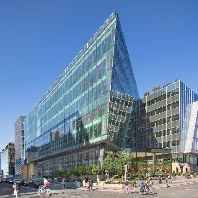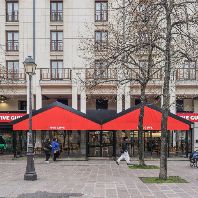Global commercial property transaction volumes in the second-half of 2009 showed clear signs of a recovery as all three major regions showed an improvement on H1 2009 volumes, reversing a trend of declining volumes, according to Jones Lang LaSalle's proprietary Global Capital Flows data analysis. However on a full-year basis, 2009 global transaction volumes fell to $US 209 billion (approx. 152.9 bln.), 45% down on 2008. The rate of global volume decline slowed as the drop in 2009 was less pronounced than in 2008 when volumes were down 50% compared with the previous year. At the peak in 2007, global transaction volumes amounted to $US 759 billion.
"The increase in global transaction volumes that occurred in the second-half of 2009 in all regions is an encouraging sign, although full year volumes were below 2003 levels so there is still a long road ahead," said Arthur de Haast, head of the firm's International Capital Group.
2009 Regional Transaction Volumes
In Europe, total transaction volumes in 2009 finished the year at $US 98 billion, representing a 41% decline from 2008 levels, and a 71% decline from the market peak. Asia Pacific, where there is less exposure to the debt crisis experienced the smallest decline in total volumes in 2009, down 23%, to $US 66 billion, representing a 46% decline from the market peak. The Americas faced harsh market realities with 2009 volumes down 64% to $US 45 billion, representing an 85% drop from the market peak in 2007. For the first time, the Americas fell behind Asia Pacific in global transaction volumes, accounting for just 22% of total global volumes.
Steve Collins, managing director of the Americas International Capital Group commented: "The continued drop in the Americas volumes is a result of the lack of liquidity in the market and the spread between buyers and sellers' expectations. Today, the gap between both sides of the transaction is narrowing and the debt markets are easing to a level where new trades will pick up through 2010. We've already toured 20 Japanese and German groups through the coastal US markets looking for prime investment opportunities in 2010."
In 2009 United States and Japanese investors remained the top two purchasers of direct commercial real estate but 90% of that activity was focused on their domestic markets. German investors overtook UK investors as the third largest purchasers of real estate globally. In contrast to the U.S. and Japanese investors, almost half their purchases were cross-border.
Cross-Border Investment Flows
In 2009, domestic investment was more dominant than cross-border trades as investors were risk averse and debt restricted. The largest cross border purchasers of real estate were the global funds, with German investors in second place.
In 2009, South Korean investors became significant purchasers of cross-border real estate their primary focus being the United Kingdom. Indeed Asia Pacific investors as a group significantly stepped up their cross-border acquisitions in the second-half of 2009 targeting the UK, China and Australia.
While the United States remained the largest market in terms of total volumes in 2009, the UK overtook the US as the largest cross-border market in 2009. Apart from the speed of price correction, the UK benefited from the relative weakness of sterling. Investors also like the long leases and strong covenants that are available, as well as the fact that it is a large, transparent market.
In the UK, 54% of transactions (in terms of volumes) were made by cross-border purchasers compared to 34% in France, 16 percent in the US, 12% in Germany and 11% in Japan.
Global Capital Markets Outlook
Focusing on 2010, Arthur de Haast commented: "The path to a global capital markets recovery will be an uneven terrain. We anticipate seeing a 30 to 40% increase in direct commercial real estate investment volumes globally. The Americas, coming from a low base, may be poised to see the largest growth at a projected 50 to 60%. Expected volume growth in Asia Pacific














